by Waters West | Jan 18, 2017 | New Products |
A Hareline Dubbing Product – Chicone’s Barred Regular Crusher Legs. These are translucent silly legs with specs/bars of contrasting color for your crab, prawn, or even your baitfish flies.
Although they look bright in the package, when you separate the individual silicone legs they are actually very translucent with light barring which is very different from most other legs on the market that are a solid color or barred black. The clear barred legs were designed to look more natural in the water, revealing only a scant amount of barred color for attracting attention over a light colored bottom or sand. The Olive, Tan and Orange are perfect for emulating tiny crustaceans hiding amongst the grass and mangrove root on the flats. The UV Reactive dye used to create the rubber legs give these flies a very unique and realistic appearance in the water.
For steelhead intruders (Hint, hint.) Try these in a Squidro/sili leg intruder. A bright color dubbing abdomen body glows through the sili leg cluster, like a translucent squid with glowing innards, the pulsating color contrast really pops in the water.
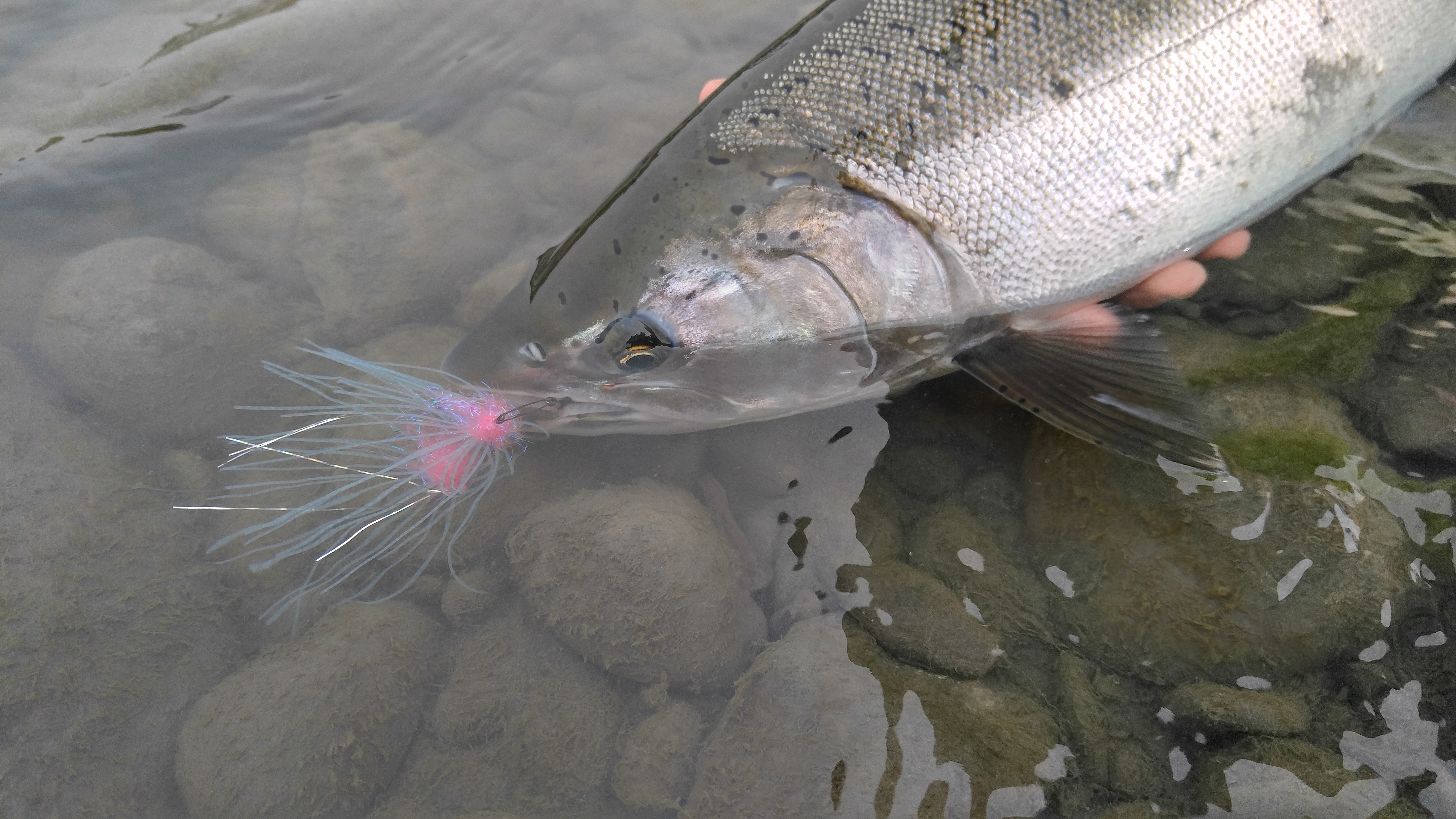
Chicone’s Rubbers Legs seem to have a pretty cool translucent effect in the water.
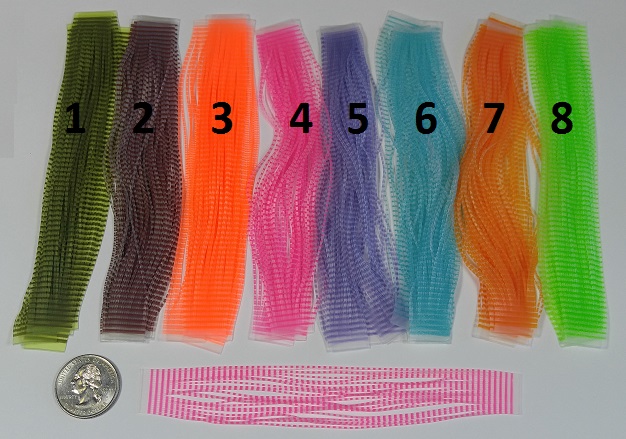
Comes in a multitude of Vivid colors. Picture does not do justice
by Waters West | Jan 2, 2017 | Classes and Clinics, Fly Fishing Education, New Products, Uncategorized |
It’s that time of the year again where you get all pysched up, buy your plane tickets, hotels, etc to go stand in the cold rain praying that this year you’ll finally hook up with a steelhead.
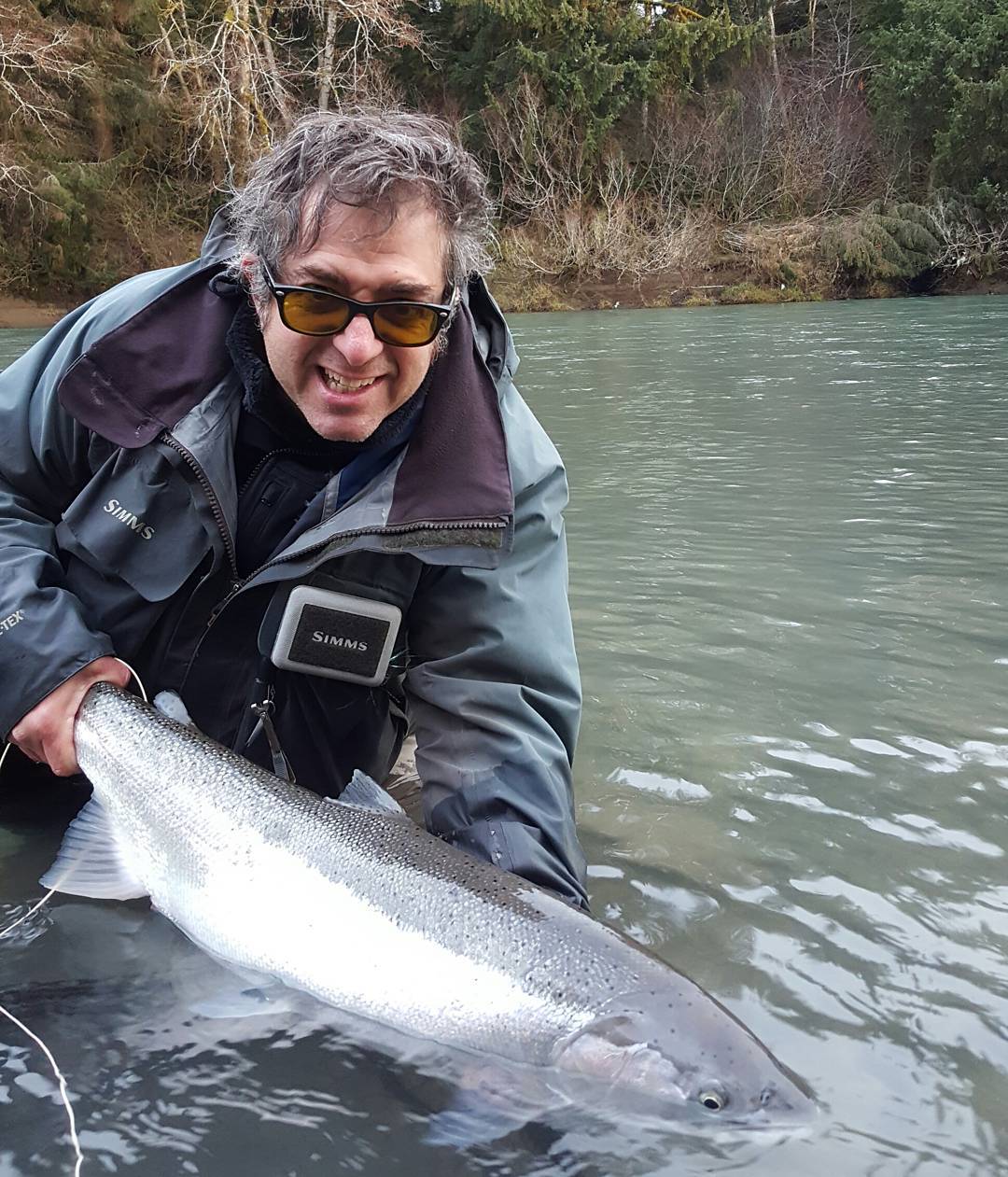
Some things that can seriously increase those odds:
Guided Trips. This is the fastest way to learn a river, learn what you’ve been doing wrong all these years, and maybe even get your first glimpse at hooking up. If nothing else you can spend the next week fishing hard and with confidence becuase at least your doing the right thing.
Cant swing a guided trip?
Take a spey casting class or even better the fishing class if you’ve got the basics down. At a fraction of the price you get a crash course of how to be more effective, and again, that confidence thing can be a game changer.
You dont need a new rod to catch a fish. The benefits of new rods are that they are generally lighter and more powerful which means more water time with out getting as tired. If you’ve only got a week to fish and want to fish every legal second, it can be a nice investment.
Best bargain spey rod: Redington Chromer
Top of the line spey rod: Burkheimer or Sage X
For reels, you need something with a good drag that wont freeze up in cold temps, won’t backspin on you, and absorbs the shock of a fast take.
Best bang for the buck: Lamson Guru HD
Top of the line spey reel: Einnarsson Invictus
We’re generally fishing skagit heads with T8 to T14 sink tips (10ft-12.5ft) and 2-4 feet of 10-15lbs maxima as tippet.
Skagit heads: Rio Skagit Heads or Airflo FIST Head
Flies: John Aleveras Suskwa poacher if you can only buy one.
It’s an especially cold winter so far, so make sure to layer up. The best layering for socks, long undies and under shirts we’ve found is Woolpower. Puts Patagonia, Simms, Smartwool, etc to shame. 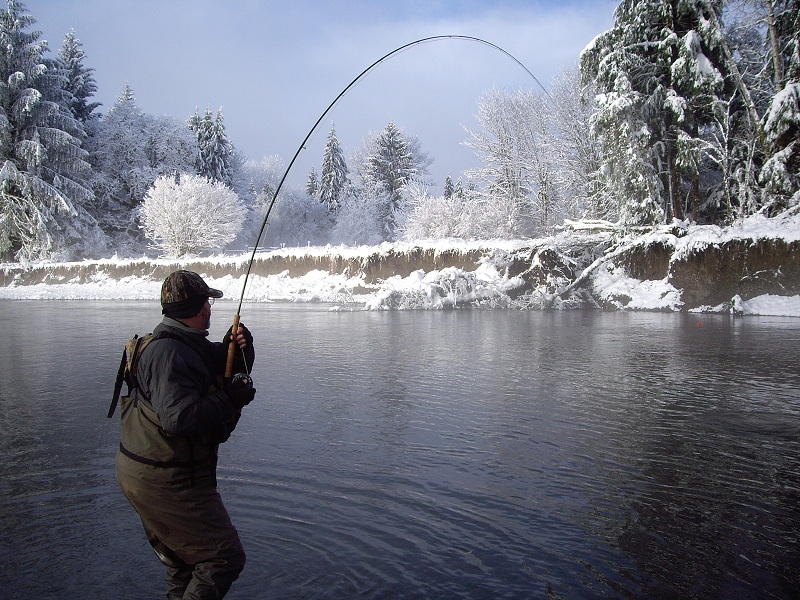
by Waters West | Dec 15, 2016 | Frequently Asked Questions, Product Review, Uncategorized |
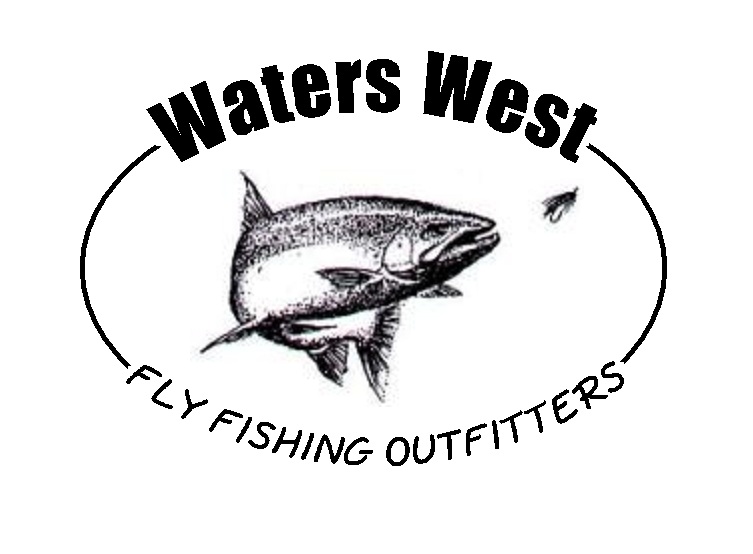
Olympic Peninsula, Wa. December 14, 2016
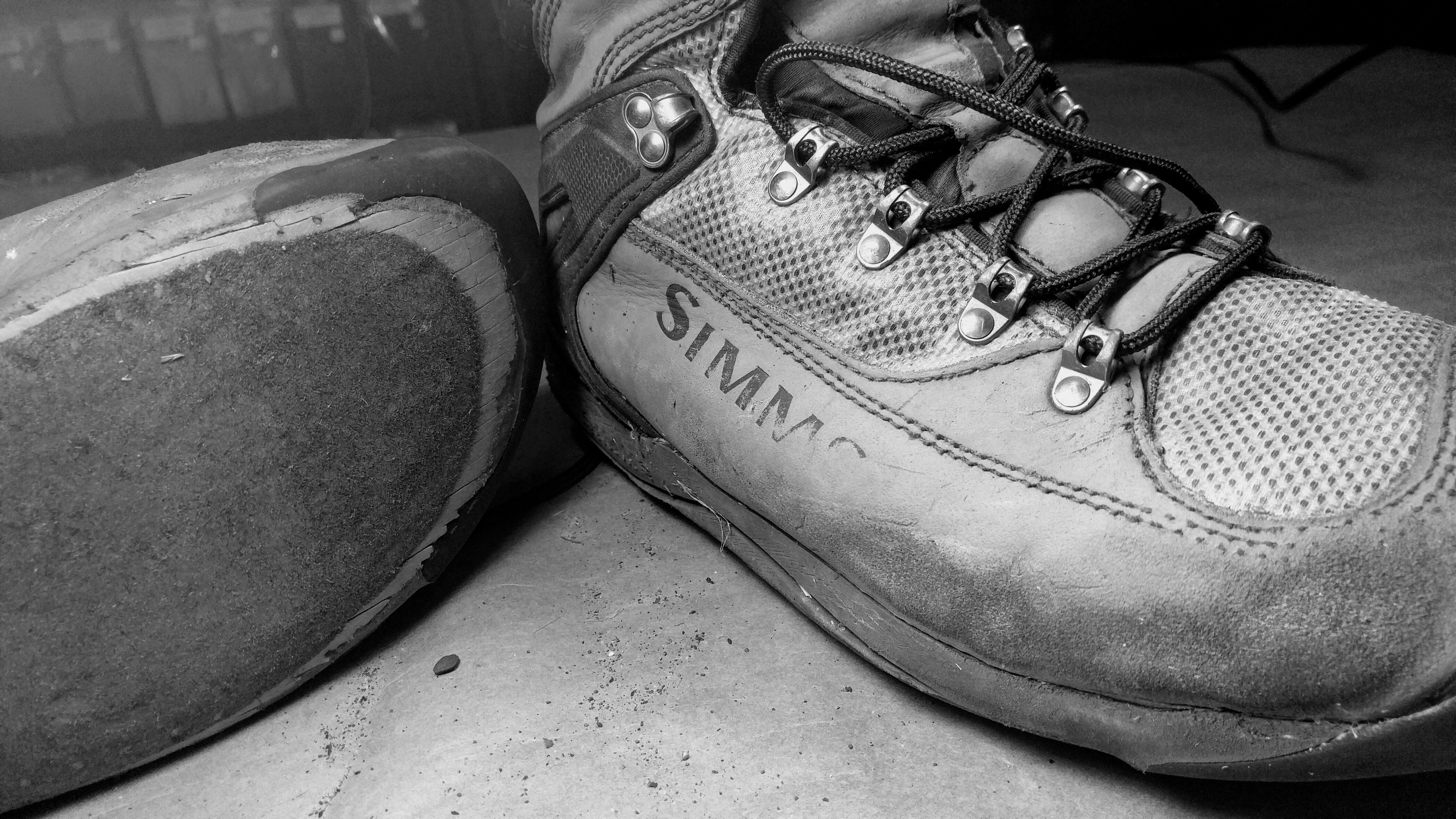
Simms G3 Guide Boot: 800 miles later
Simms G3 Guide Boot: 2 Years of Abuse
(for the down and dirty review just browse through pictures and scroll to the bottom and look for the Recap)
The rain forests of the Olympic Peninsula are perfect proving grounds for today’s “latest and greatest” products as they are tested in the extremes of constant moisture and continuous abuse. We are always fishing harder and pushing farther in search for anadromous fish and rely heavily on our gear too take the brunt of this devout persistence. This is a review of such a case.
The Test Subject: The owner of these boots happens to be a local and good friend of ours who by nature is a swing junky and fishes the OP every chance he gets. About 200 days a year. Fishing mainly the mornings in the winter and summer then driving his beater high gas mileage Subaru Forester back to Port Angeles for work in the late afternoon. Living the dream… He weighs 200lbs 6′ 1″ and hikes/wades faster and farther than anybody I know. During outings, on average he may put 2 to 8 hard earned miles into each trip. With much of that over grapefruit sized river-rock and bushwhacking dense rain forest terrain. To be fair, using a low median of only 2 miles per trip that puts these boots well over 800 miles! I almost want to lower that number to make it more believable, but then this blog would only be partially correct.
The disclaimer would have to be that this is only one pair from one individual.
Before and After
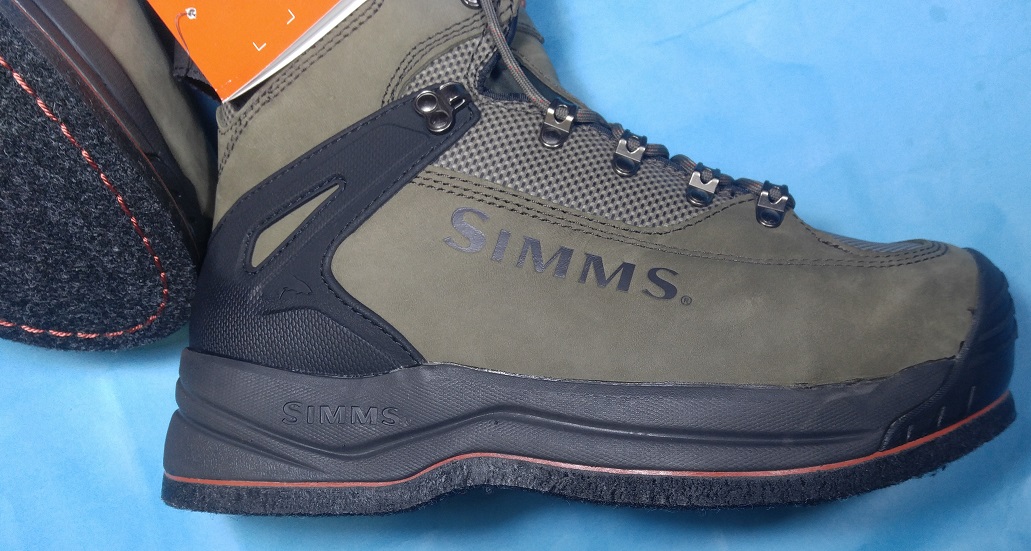
Fresh out of the box
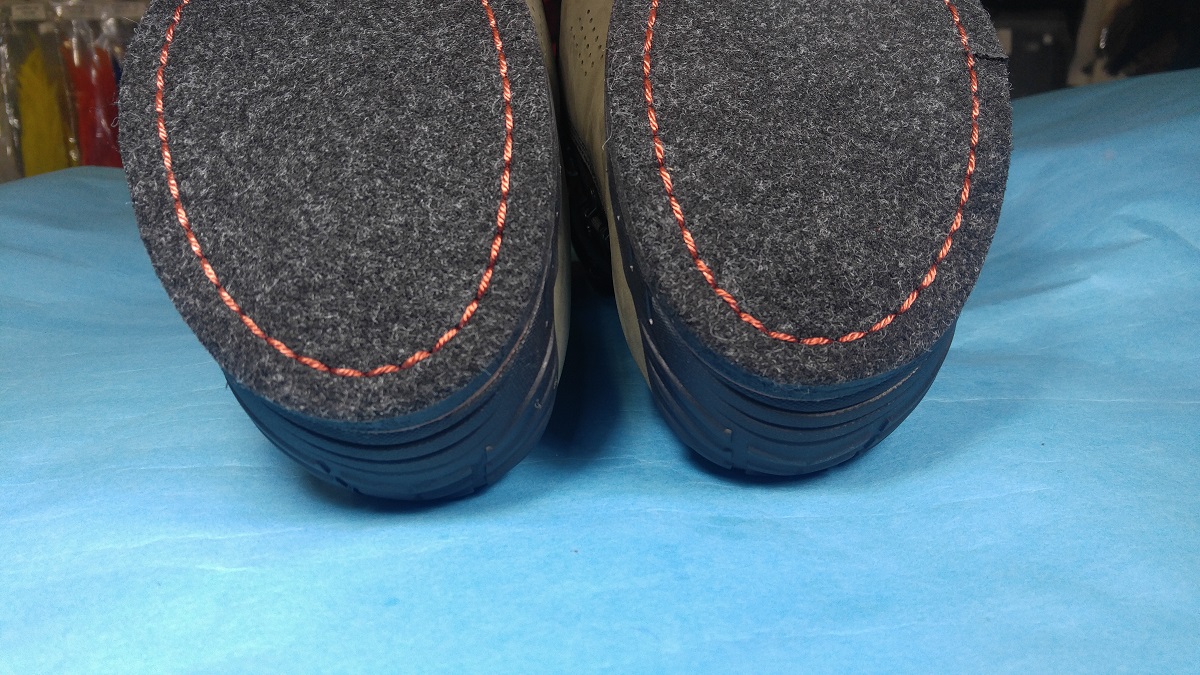
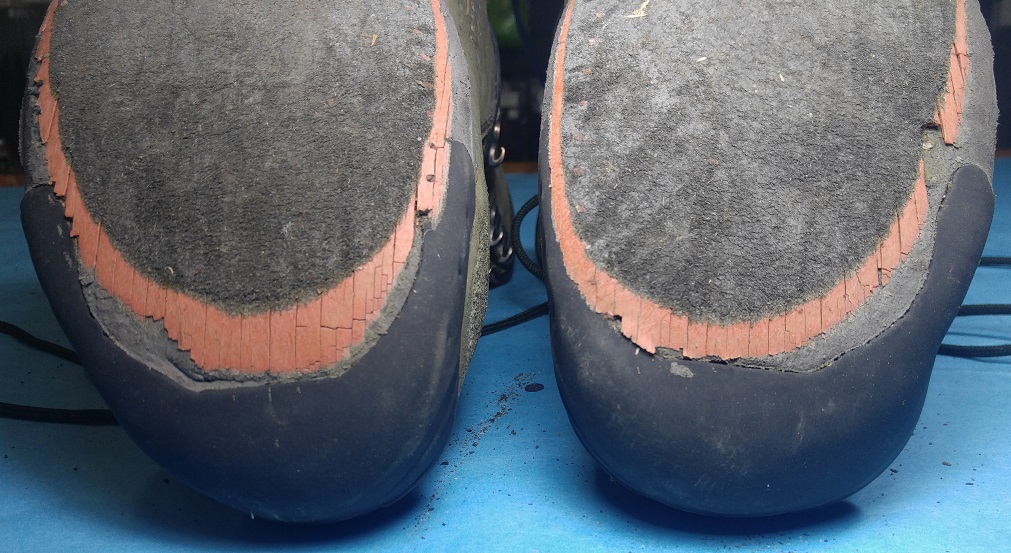
Felt bottoms did not peel or come off!… but you should replace your felt bottoms way before this happens… just saying
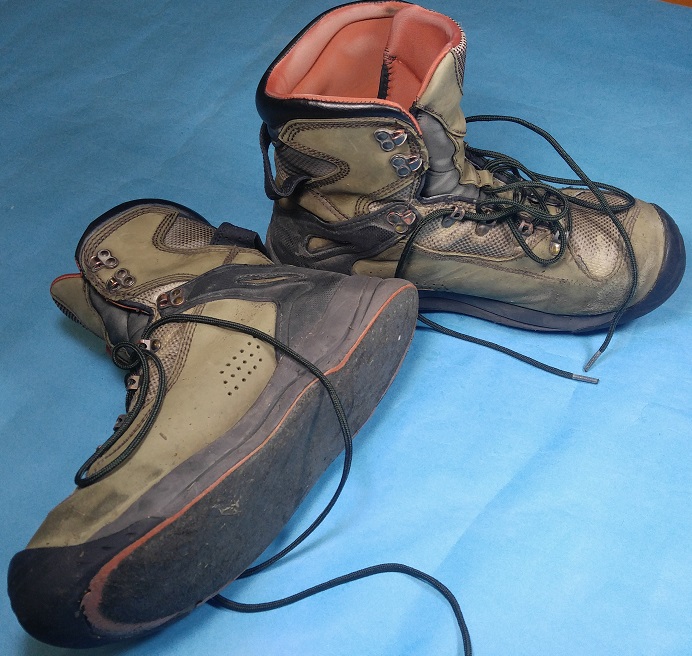
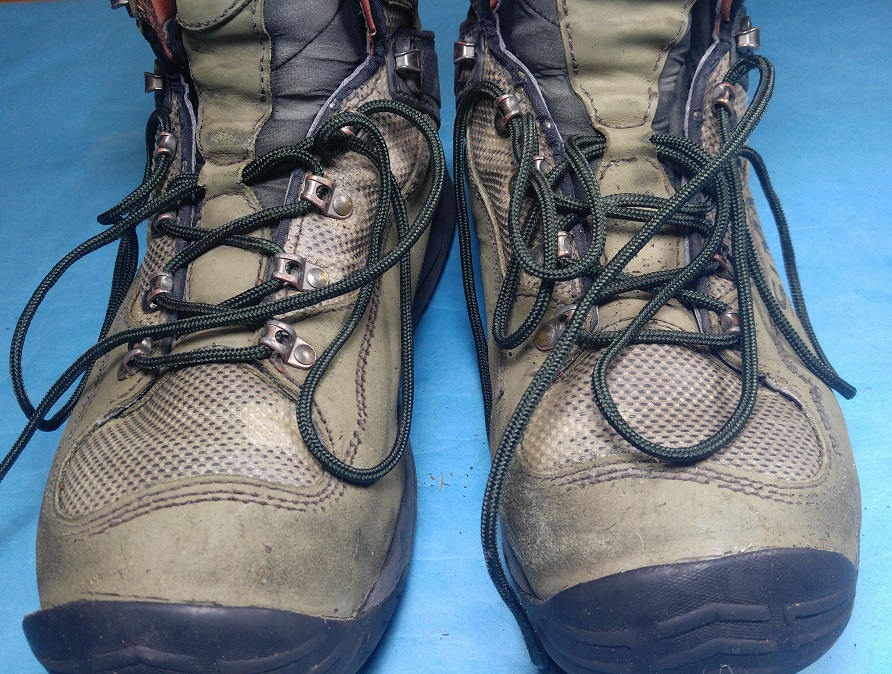
Laces have been replaced multiple times throughout the life of these boots
When looking for a durable boot we usually consider a few factors.
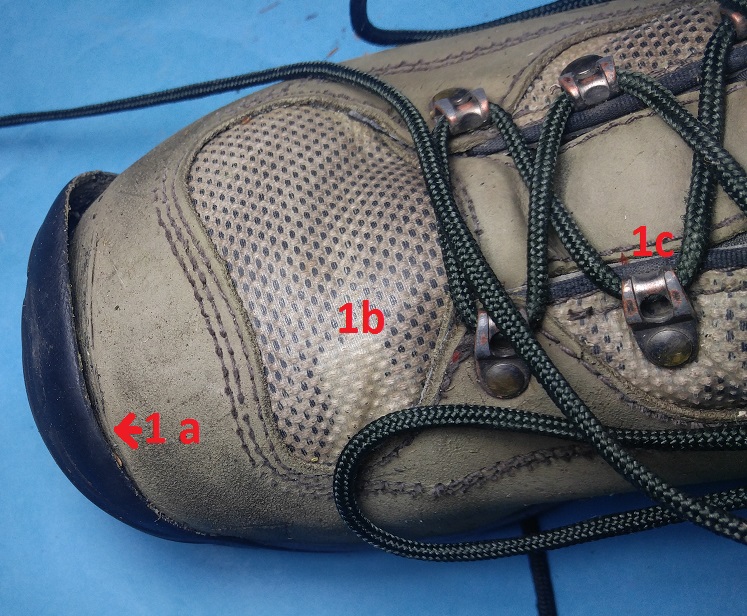
Toe guard failure after (approx mile 600) Not bad though
1a: Seam Strength: anywhere material is glued (such as the toe guard pic 1a) is always prone to peeling, few manufactures get this right. Though this did come unglued toe guard held as it should and with signs of separation around (approx) mile 600. Not bad
1b: TPU Fabric (Thermoplastic Polyurethane): At or just above where the toe flexes is a pressure point and common tear/failure location for many boots we see. Many fail at this wrinkle point. For this pair the TPU (thermoplastic polyurethane 1b) held up as it was claimed to by Simms. It did not separate or crack, nor was it so stiff as too tear or cause seam separation where the TPU meets the soft leather.
1c: Minimal corrosion on all metal lace eyelets and lacing hooks. (boot laces have been replaced 4 times) Also, an important highlight, none of the lace eyelets came undone, broke, or pulled out of the boot.
If you ever have owned a pair of wading boots and had one of these pop or brake on you while lacing up at the river you know how disappointing it can be. They are still firmly in place even after all those miles. This fact must not be over looked and greatly appreciated.
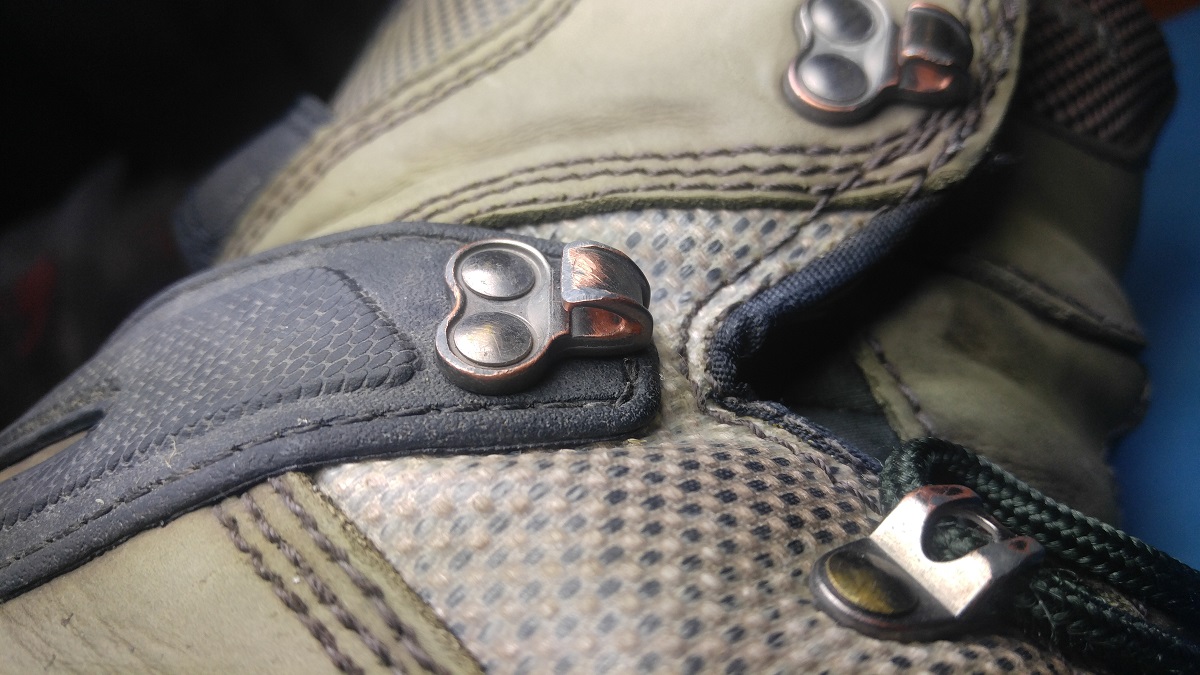
These metal “double hole” boot hooks held nicely w/ superb abrasion resistance, minimal corrosion and no signs of detachment
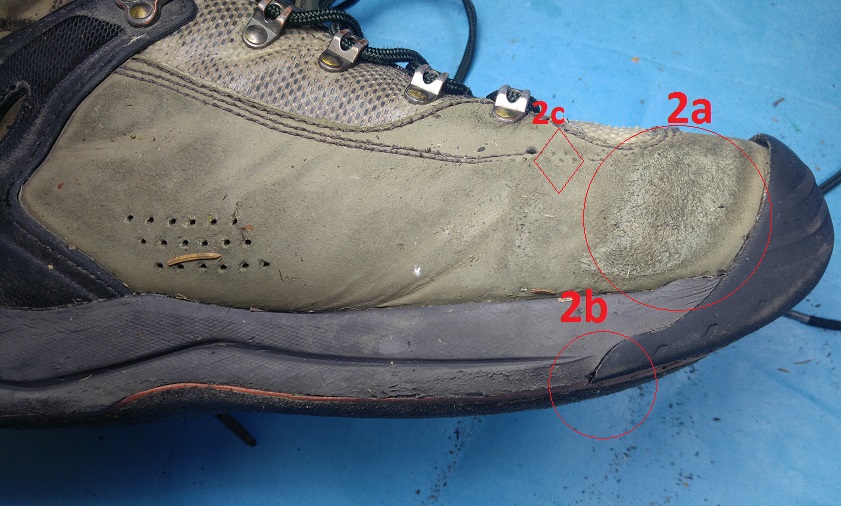
points of high abrasion
2a: Material Durability: On our OP rivers its not uncommon for us to stand or cross through fast riffles, which requires us to wedge our feet between two or three rocks, locking into place, in order to avoid being swept down stream. This puts massive amounts of wear on materials notably around the lower outer sides of the boot.
2b: This location receives continuous amounts of abuse and abrasion while walking and the meeting point of these two joining materials held up superbly! No evidence of peeling.
2c: Threads have worn away around points of abrasion. (Which is expected after all those miles) What we don’t want is for threads to pop at those “pressure points” we keep mentioning. Simms got it right when they put the side stitching high and up above the abrasion line. Notice how there are no threads in this concerning area. (the threads in the ankle support are counter sunk, circled in the next picture).
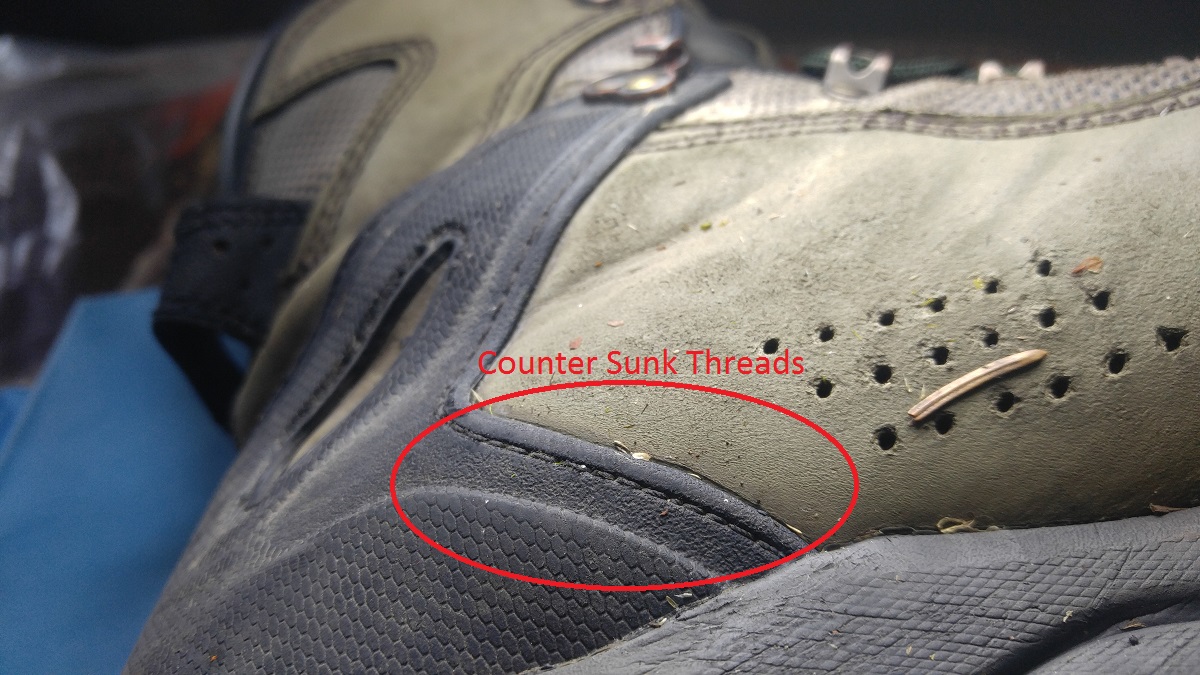
Score on the counter sunk threads! also notice the heal guard is textured incidentally adding traction when wedging feet between rocks
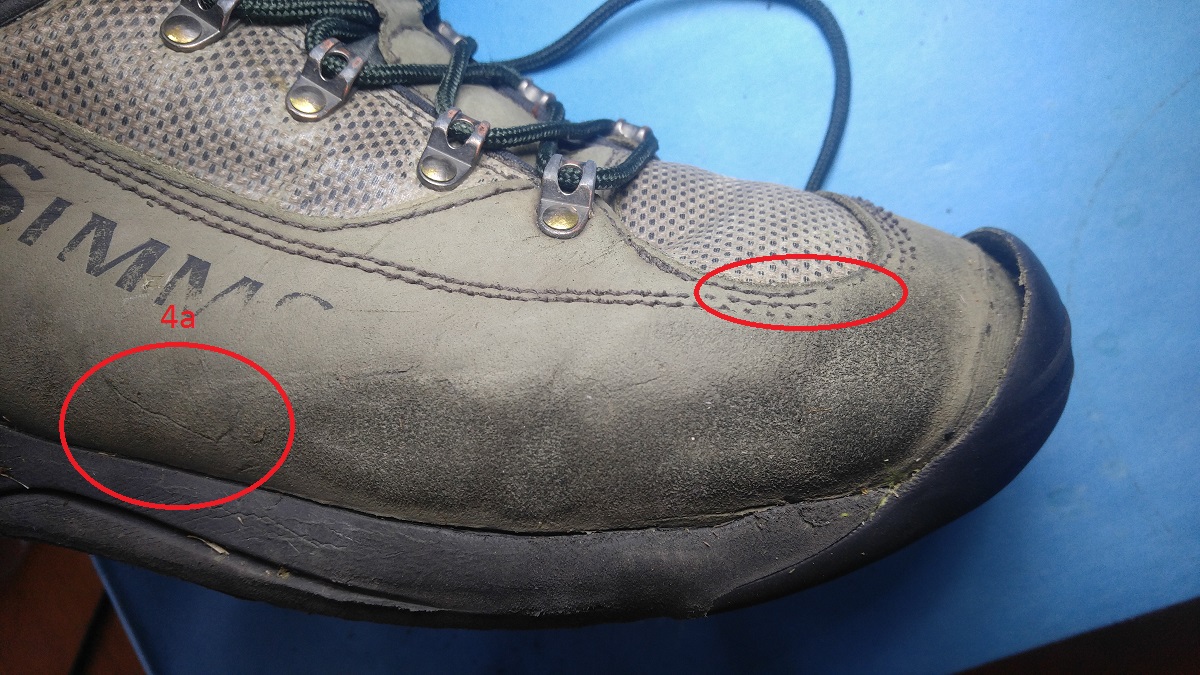
by minimizing the amount of side seams and by putting stitching above the abrasion line, threads/seams tend to last much longer
Can you AquaSeal your stitching? yes, but you will render the Warranty and some agree doing this will ruin the ascetic appeal. Also, unless you keep up on resealing those threads, eventually they will wear out. All in all the threads Simms used seem to of held up moderately well to our expectation.
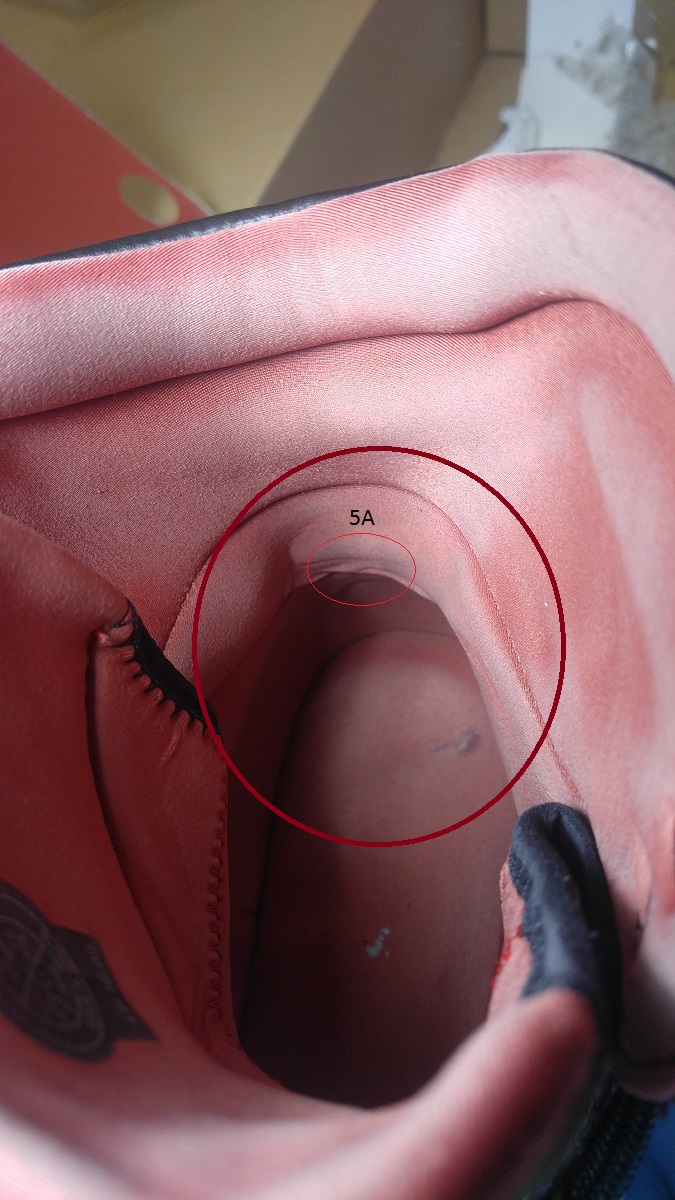
Say AHHH. No signs of significant wear. Always ensure your gravel guards are pulled down and hooked to your laces.
5a: The neoprene lining shows no signs of significant wear in this high friction point. (I have yet to see this location showing extreme signs of wear from a “properly fitted boot” so if you have worn this location out then either you need to find a more correctly sized boot, or just always remember to pull down your gravel guards!)
Comfort and Support. These boots are shaped beautifully, molded perfectly to the contours of the human ankle, so when you slide your foot into the boot its instant comfort and support. As this boot was “broken in” it became a little softer and flexible but did not loose any of its form fitting design and ankle support. After speaking to the owner of these boots he noted they were way more comfortable after they “broke in” and the comfort just got sweeter and sweeter.
(Personally most of us thought the ankle support was too much in the Simms Guide boot and restricted mobility much like that of a ski boot. But once this boot is officially “broken in” (maybe a dozen full day wade trips) the boot becomes very comfortable and gives a hiking and wading confidence as the Simms Guide boot design reinforces the ankle makes for a more sturdy footing in fast water.)
Recap:
- TPU (thermoplastic polyurethane) held up nicely stayed flexible, did not peel or crack.
- Excellent placement of threads (i.e up high and or countersunk) and minimum seams
- Great comfort and and sturdy ankle support that is beautiful once officially broken in and keeps getting better to the last day
- Boot lace hooks and eyelets are corrosion resistant and did not pop out of place.
- Felt bottoms did not peel off… (just check out the pic again to appreciate how well the felt sicks)
They say you can tell a fisherman’s story just by looking at the boots on his/her feet. These boots have seen the miles and tell of many cold hard- earned days searching for anadromous gold on the OP rivers.
Simms G3 Guide Boot: Vibram Tread w/ star cleat review. Coming Spring 2017
For inquiries call (360)417-0937 or to visit our online store WatersWest store
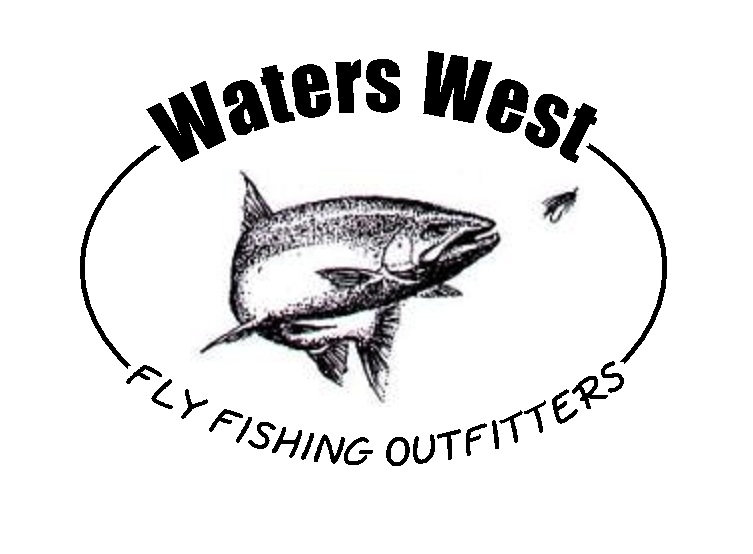
Happy Trails!
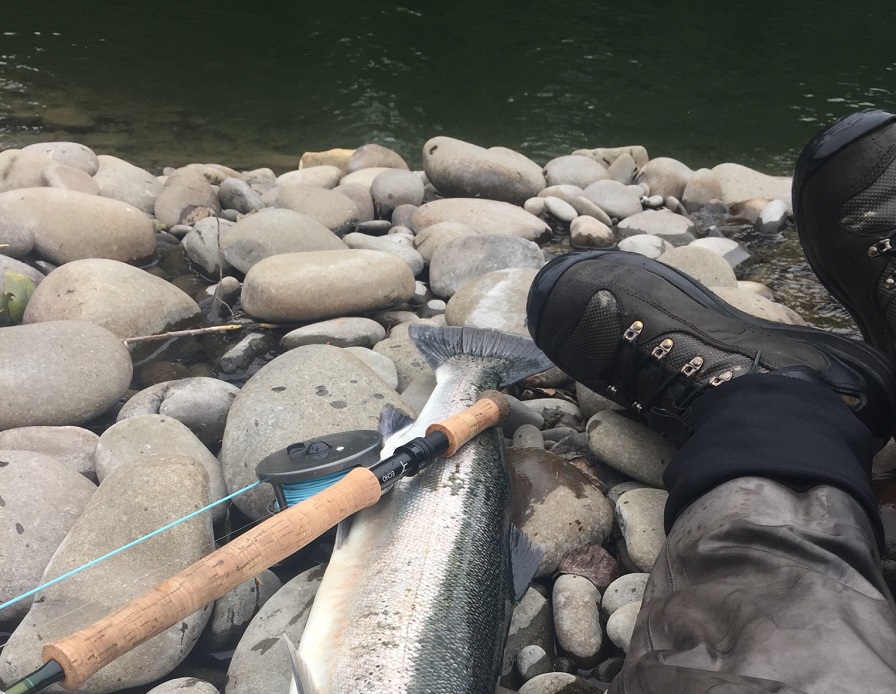
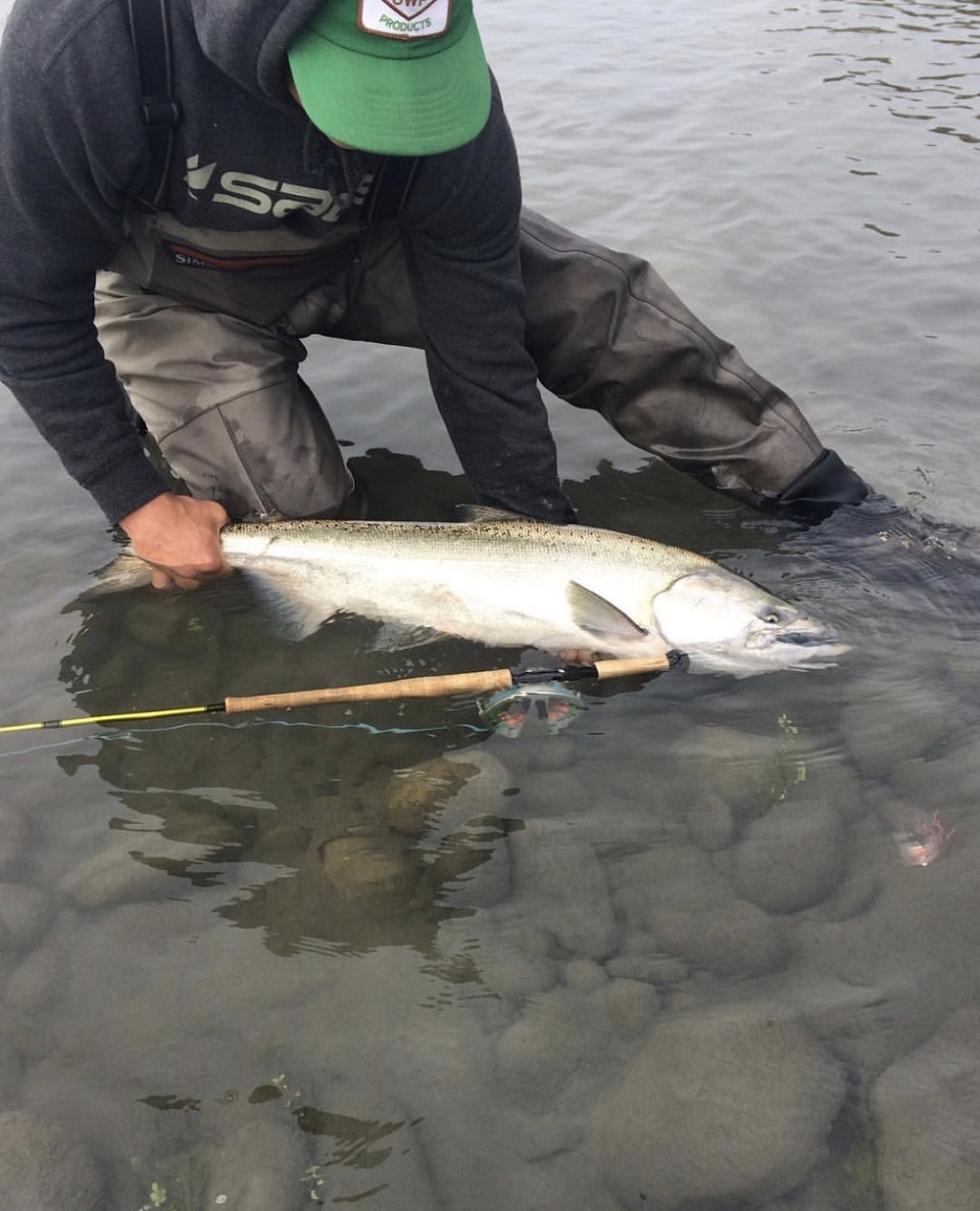
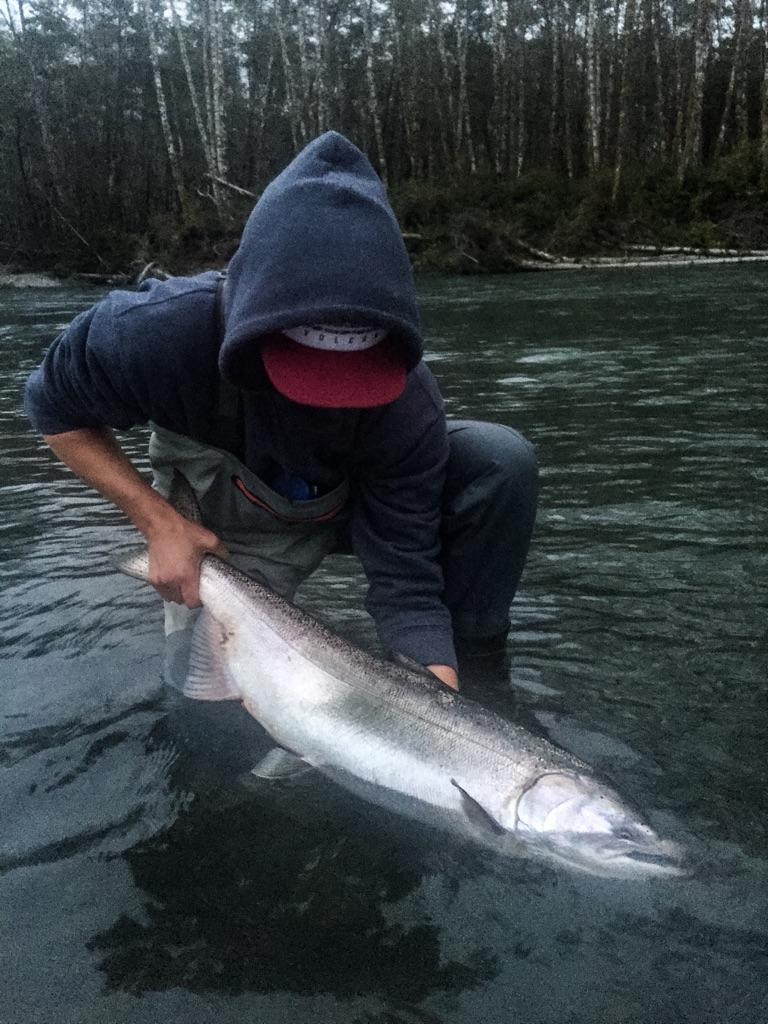
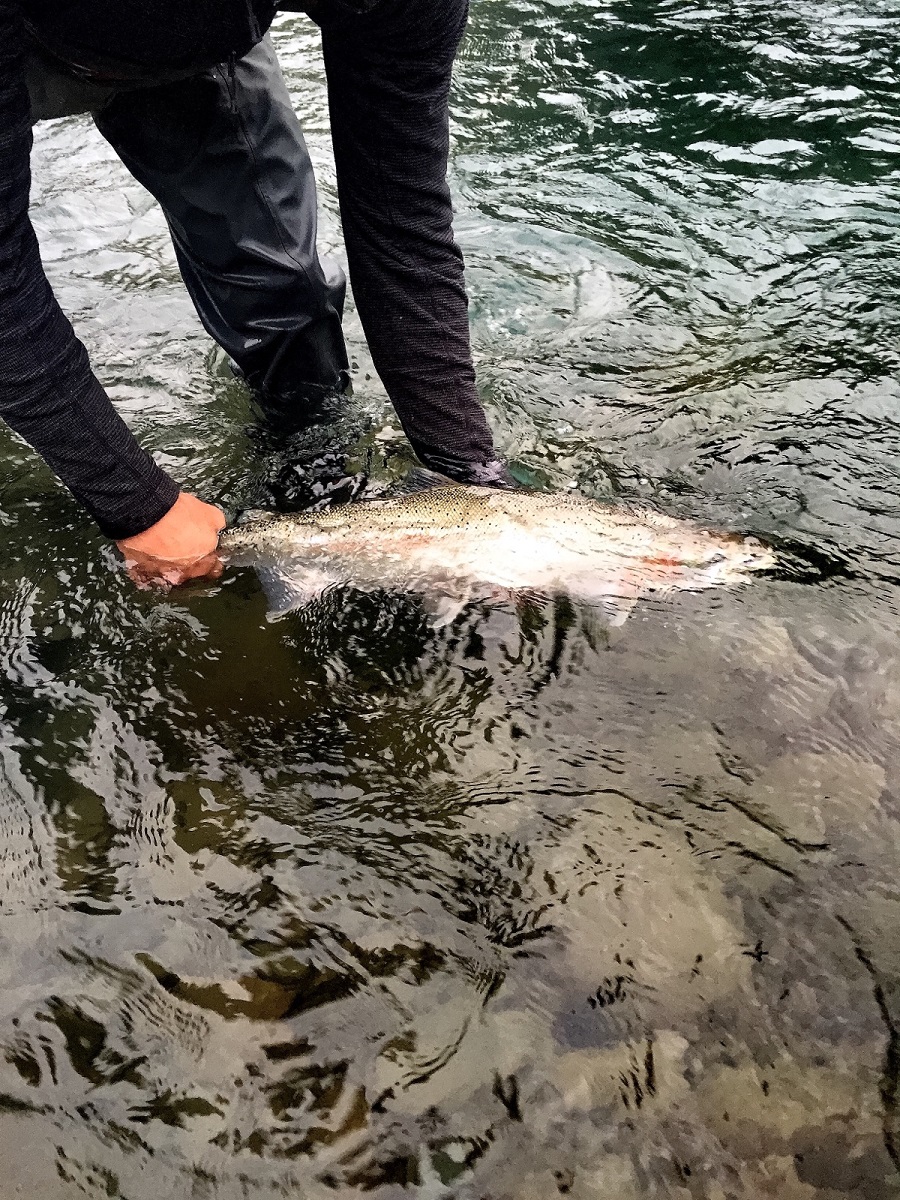
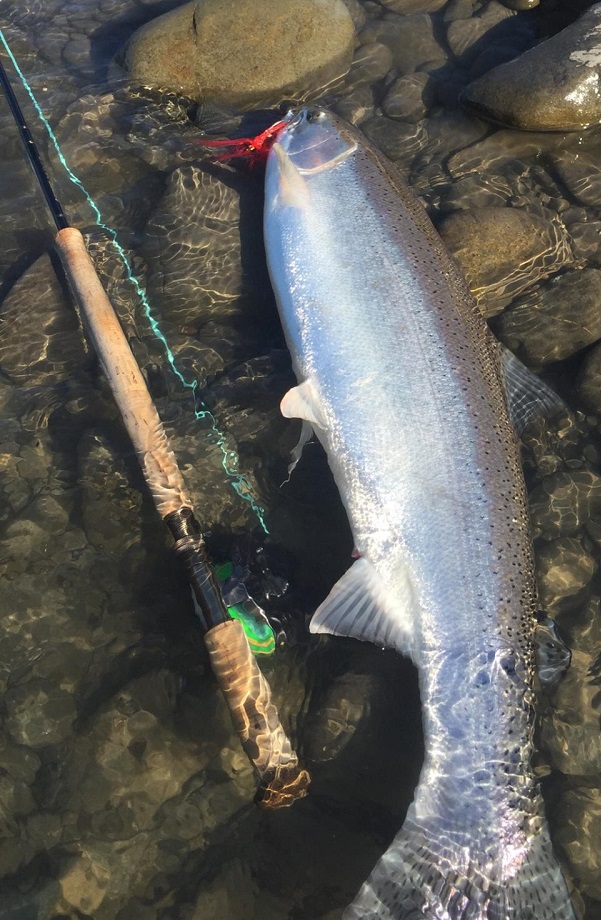
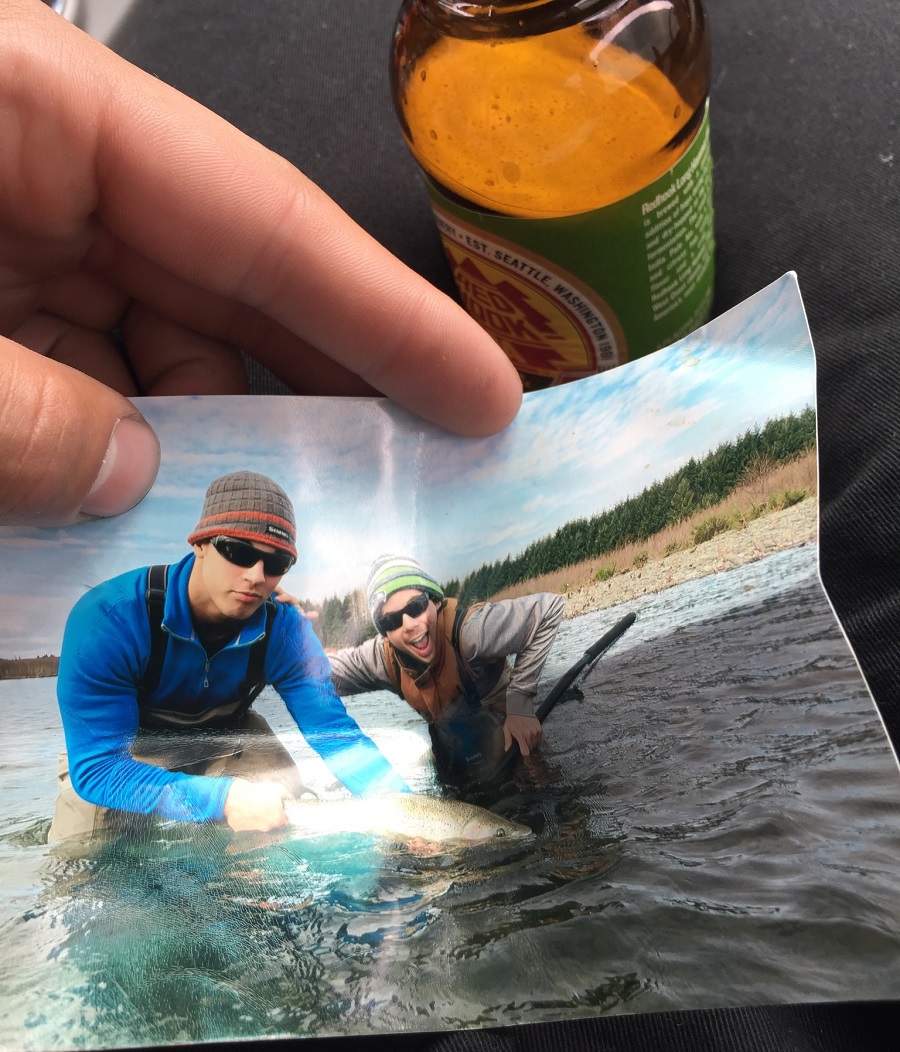
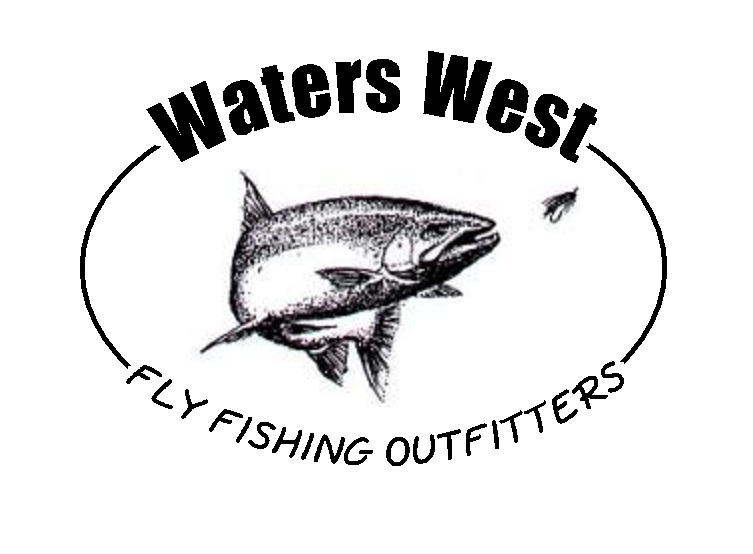
by Waters West | Sep 9, 2016 | Elwha Dam Removal, Fishing News |
Safe passage to the upper Elwha was previously blocked by a rockfall from the removal of the Glines Canyon dam, but was removed last fall. Fish have taken advantage of this removal and have now been confirmed by the Olympic National Park as having made it to the upper stretches of the Elwha!
“Fisheries biologists monitoring restoration of the Elwha River and ecosystem recently confirmed that adult Chinook salmon, sockeye salmon, steelhead and bull trout have all passed upstream through both the former Elwha and Glines Canyon dam sites to reach the upper Elwha River.”
You can read the whole news release here!
https://www.nps.gov/olym/learn/news/fish-continue-to-recolonize-elwha-watershed.htm
Awesome news!
by Waters West | Sep 3, 2016 | Uncategorized |
With the winter tying season on its way it’s time to start picking through your fly boxes and filling in the empty spaces. Whether you’re tying classic steelhead flies or a Parachute Adams, chances are you’re going to need hackle and a lot of it. We here at Waters West highly recommend checking out our selection of Whiting’s capes and saddles. The benefit of purchasing a whole cape or saddle isn’t just that you get a large amount of feathers, but also a large variety of sizes to choose from. That way you can tie a #14 stimulator and a steelhead intruder with the same saddle.
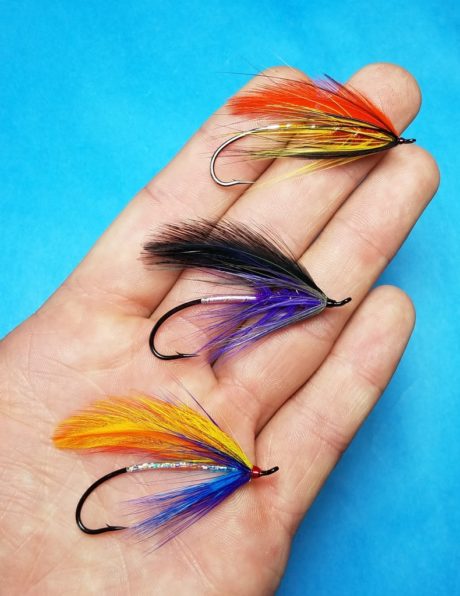
Top: Sol Duc Spey (tied by Sean Dalquhist) Middle: Isabella Spey (Tied by John Alevras) Bottom: Winters Hope (Tied by John Alevras)
Whitings “American Rooster Capes” are everything you’re looking for when it comes to tying classic steelhead flies. We offer a large variety of colors and styles of these capes including grizzly, badger, black laced white and solid colors. All of these styles make beautiful wings on flies like the Winters Hope, Isabella Spey, and Sol Duc Spey. The same feather that’s used on the wing can also be used as the hackle or collar on the same fly. They also tie in surprisingly easily so even an inexperienced tier can tie some beautiful feather wing patterns with a little practice.
Not only are they great for steelhead flies, but they are perfect for small tails on trout flies. The fibers stick straight off the back of the hook and are stiff enough that they won’t foul up around the bend of the hook. These hackles have also been the feather of choice for tying tails on saltwater patterns such as Lefty’s Deceiver. They’re stiff enough that they don’t constantly foul up, and their translucence helps it look like a natural bait fish under the surface.
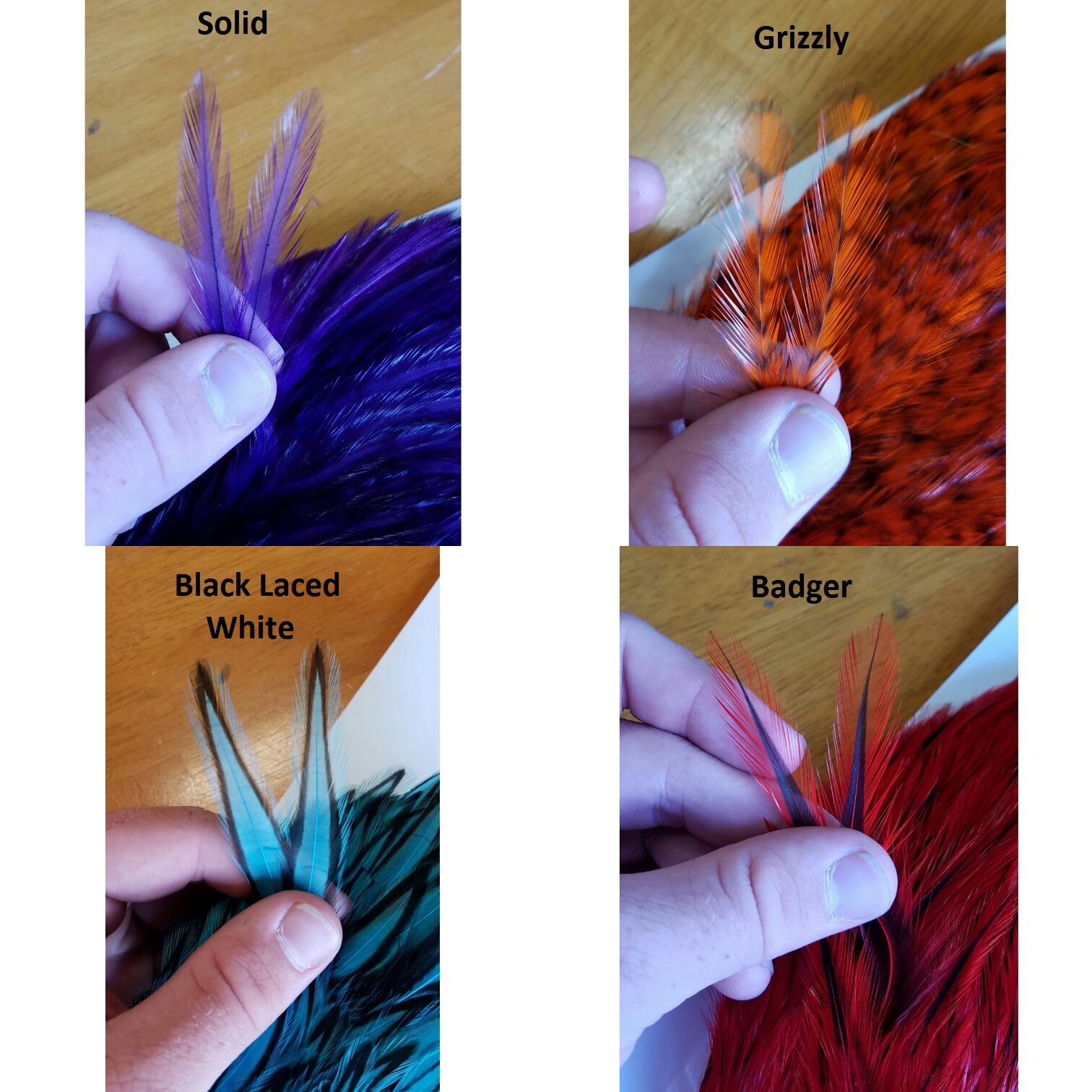
Whiting’s “High and Dry” saddles are a fly tyers dream! When it comes to tying intruder wings or camo squids these feathers are exactly what you’re looking for. They’re long, soft, webby and come in an incredible variety of colors. Tied in as a tail these feathers explode in the water with pulsation and movement and are still extremely durable. You don’t have to worry about their fibers falling off in the current or tips breaking after a few smacks on the rocks.The pointy tips also make them great for wings on smaller summer flies such as a Silver Hilton or Orange Summer Run.
Not only are these saddles great for steelhead tying but they are perfect for any of your trout flies. The large variety of colors and fiber lengths makes it easier to customize your dry flies to your exact specifications while still being able to use the same saddle for any of your streamers and nymphs. They wrap in wonderfully to make a great bugger hackle or even for nymph legs such as a bitch creek special.
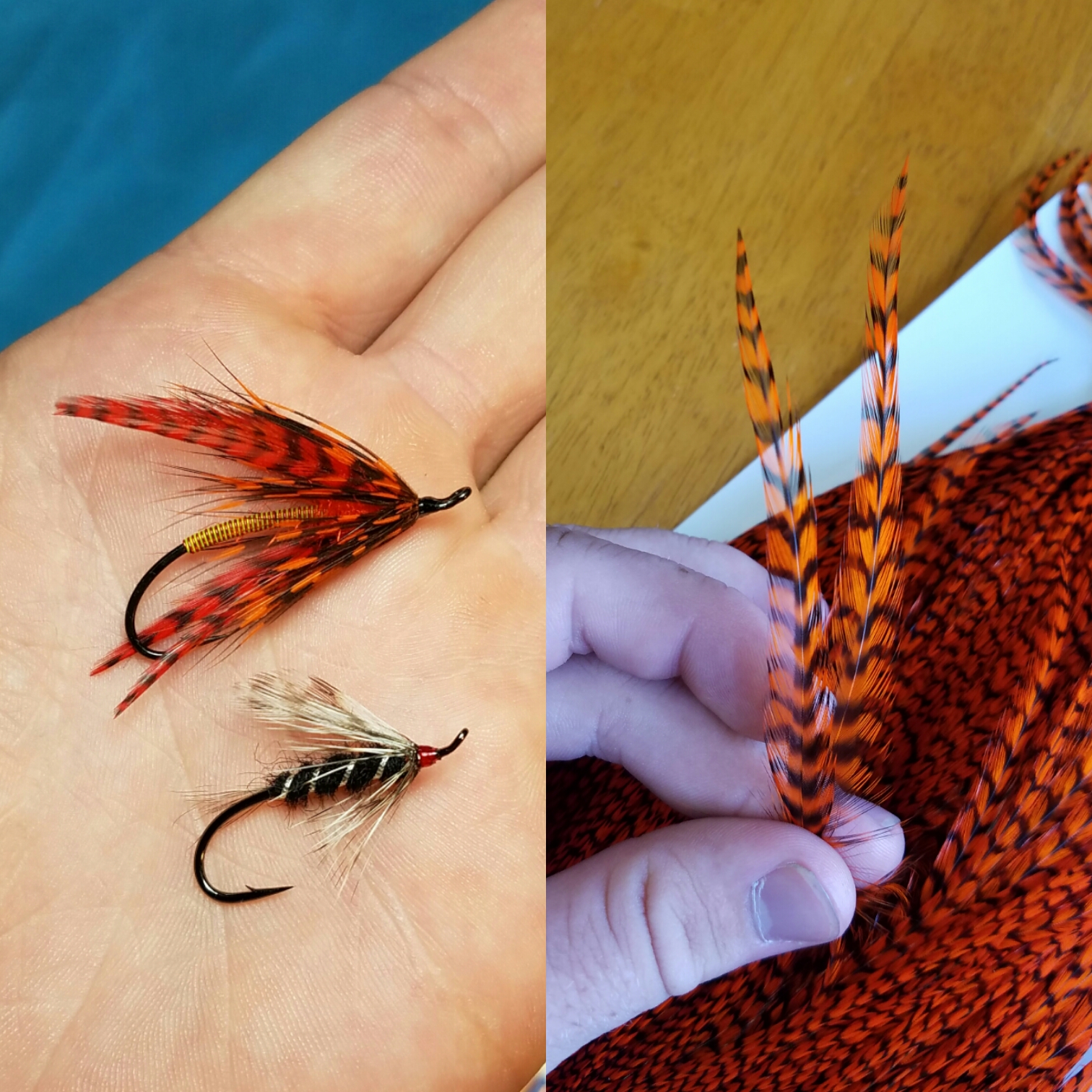
You can find all of these capes and saddles on our website! Click here to check them out.
by Waters West | Aug 15, 2016 | Fishing News, Fishing Report |
Just a reminder that the Hoh is currently closed.
We’ve had quite a few good fishing reports from the Hoh, but it is indeed closed. It’s scheduled to reopen on Sept 1 2016 – Oct 10 2016.
by Waters West | Aug 4, 2016 | New Products |
Argus Pheasant secondary wings and tails are one of the prettiest feathers that you’ll ever find in a fly shop. They’re huge, covered in beautiful spots and stripes, and also fairly difficult to find. They are very well known throughout he Atlantic salmon fly tying community because of there stripes and spots, but also they marry very well to almost any feather. Happily, we now have Argus whole wing and tails pairs. The pairs that we received are in great shape and they are at a hard to beat price! And to top it off we also have them available in 2″ paired sections. So if your worried about dropping the ball on getting a whole tail or wing pair, you can get a small piece to give it a test drive. There are 3 options for these smaller packs including tail pieces, and secondary wing pieces. The wing pieces are available with fibers ranging from 2.5 – 3.5 inches, or 4 – 5 inches.

2 inch pieces
The tail sections have fibers that range from 2 to 3.5 inches long. This makes them plenty long enough for your Atlantic salmon flies, but also not too long that they couldn’t be used for muddler wings. When it comes to married wings these tail feathers will marry to just about any other fibers you’re using. They are great for adding separation and contrast between brighter colors, and also very easily tie down to the shank without folding over.
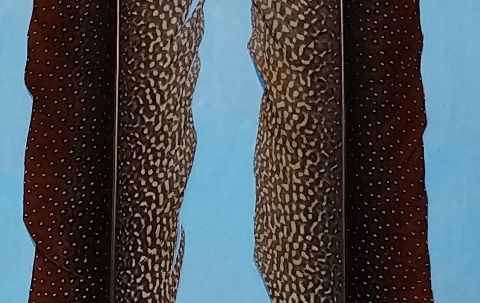
Argus Tail Pair
The secondary wing feathers have a much more complex design of stripes and colorful spots that follow the entire length of the stem. An entire wing on a salmon fly made from these fibers look incredible. They also marry to just about anything like the tail feather. The length of its fibers can range anywhere from 2 inches up to 5 inches which allows you to cover a larger amount of hook sizes and styles making it the overall perfect feather for you classic Atlantic salmon and steelhead flies.
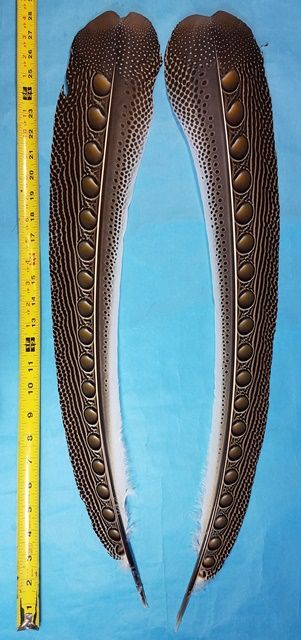
Argus Secondary Wing
by Waters West | Jul 30, 2016 | Fly Fishing Education, New Products |
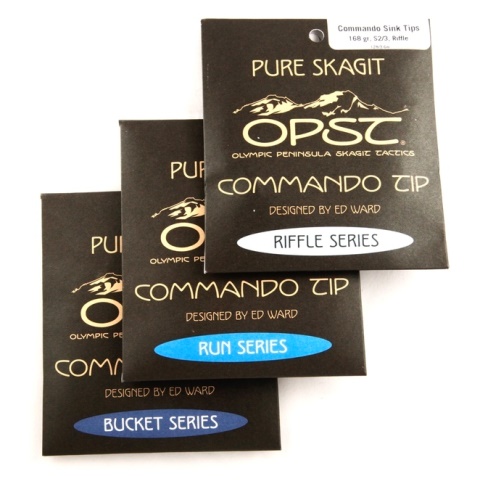 The boys at OPST have done it again with their recently released Commando Tips. One of the reasons we are such big advocates for their gear is because it is made by and for people who fish hard and thoughtfully. They know how to make a good product, and then they’ll go a step further and make it intuitive. Take their tippet for example, great product and then they made it with waterproof labels….DUH! Sink Tip wallet with waterproof labels, no zipper that can be corroded or stuck, and mesh nylon for easy draining, and now SINK TIPS!
The boys at OPST have done it again with their recently released Commando Tips. One of the reasons we are such big advocates for their gear is because it is made by and for people who fish hard and thoughtfully. They know how to make a good product, and then they’ll go a step further and make it intuitive. Take their tippet for example, great product and then they made it with waterproof labels….DUH! Sink Tip wallet with waterproof labels, no zipper that can be corroded or stuck, and mesh nylon for easy draining, and now SINK TIPS!
These tips are formatted a little differently than the MOW tips, but it makes a lot of sense and is especially helpful for the particular angler that knows exactly where she or he wants the fly.
First, they are designed to be used with the Commando heads, but that doesn’t restrict them to just that function. They are only offered in 12ft because that will help prevent blowing anchors and that is really good all-around length.
Second, they have two different densities within each tip. If you’ve ever played with the iMOW’s or Airflo FIST line you already know the logic behind this, but in case you haven’t it basically just makes a straighter, more even sink to the fly, reducing the amount of belly in the tip and making the connection to the fish easier to feel.
The really neat thing about these tips is the actual sink rates. MOW tips are our go to for the OP. “Generally” speaking we’ll fish T-8 for summer, or low water in winter, maybe T-11 in some buckets, and T-14 and T-11 in winter. That’s going to be oh-so different here, but in a really cool way.
The grain weight is more designed around the rod weight. So instead of a T-8 being used for low water and smaller flies on any rod size, it is used for 2-6 weight rods; the T-11 tips for 5-8 weight rods and the T-14 tips for 7-10 weight rods. Then within your rod weight range you have a selection of sink rates including riffle, run, and bucket. Talk about easy, and smart.
These are geared more toward switch and spey rods, but we wouldn’t be surprised if they came out with a single hand version pretty soon here.
| 96 Grain, 12 foot (T8): |
132 grain, 12 foot (T11): |
168 Grain, 12 foot (T14): |
| Rod Size: 2-6 |
Rod Size: 5-8 |
Rod Size: 7-10 |
| Color: Yellow |
Color: Light Blue |
Color: Tan |
| Riffle: S2/3 |
Riffle: S2/3 |
Riffle: S2/3 |
| Run: S3/4 |
Run: S5/6 |
Run: S5/6 |
| Bucket: S5/6 |
Bucket: S8/9 |
Bucket: S8/9 |
by Waters West | May 28, 2016 | New Products, Shop News and Sales |
Coming out in June! Perfect timing for your summer adventures. The boss man, Dave Steinbaugh, wrote the section on the Olympic Peninsula too, so be on the lookout for this book.
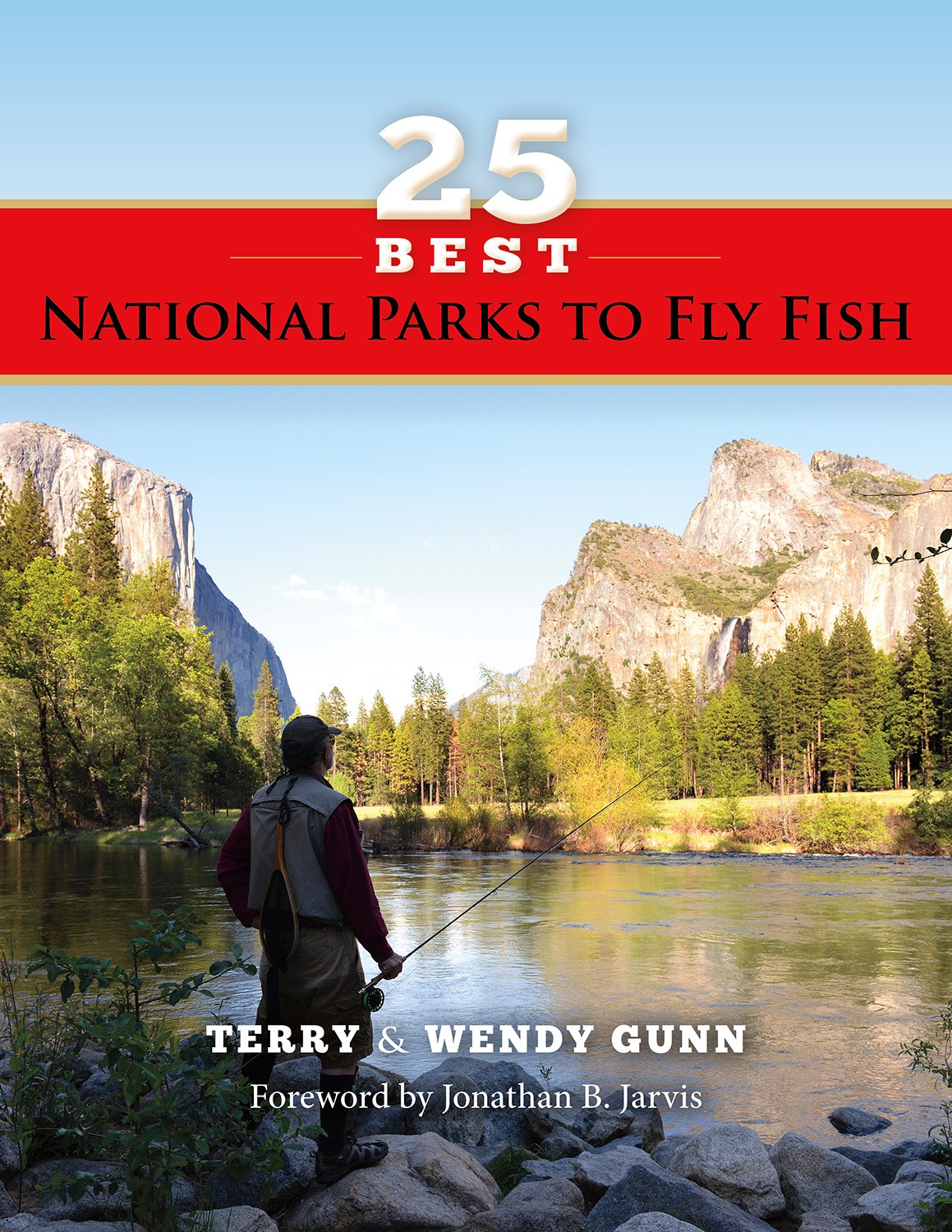
“25 Best National Parks to Fly Fish celebrates the phenomenal fly-fishing opportunities in the National Park System, and the centennial of the National Park Service stewardship. Authors Terry and Wendy Gunn tap into the collective knowledge of some of the most accomplished guides and anglers working the waters both inside and adjoining the nation’s most accessible national parks. From jumping tarpon in the Everglades, high-sticking for brook trout in the small creeks of the Great Smoky Mountains, and throwing line in the high-alpine lakes of the Rocky Mountains, these authors and contributors share their deep knowledge of each park and the many species that inhabit their waters. In addition to the detailed GIS maps, recommended flies, hatches, hot spots, and suggestions for gear, lodging, and dining for each location, this book contains more than 150 stunning, 4-color location photos that will make you want to pack up your gear and hit the road for a world-class experience in America’s national parks!” – 25 Best National Parks To Fly Fish
by Waters West | May 20, 2016 | Classes and Clinics, Fly Tying, Shop News and Sales |
Jeffrey Delia at Waters West for a free BEACH AND LAKE fly tying demo!
FREE
Saturday May 21st @ 1pm!
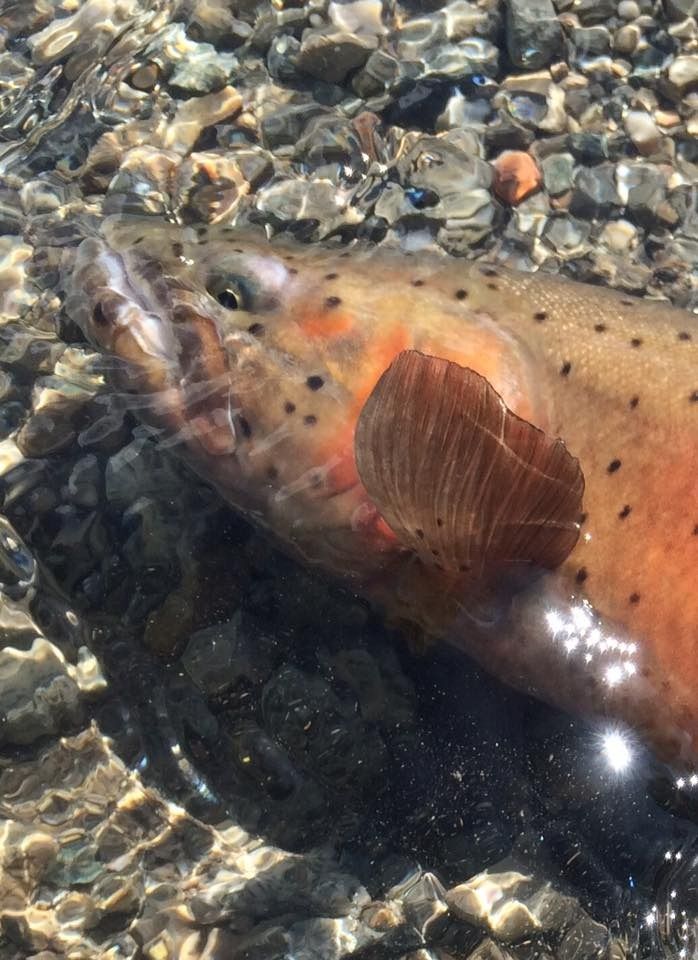
Jeffrey is a well known fly tyer, developing flies that are not just pretty but EFFECTIVE. Our personal go to for beach fishing is almost always the conehead squid created by Mr. Delia himself.
With the possibility of closures looming, beach and lake fishing may be a safe bet this summer, and
this is a great demo to attend for those who don’t even tie. The man has tons of info on not only beach fishing, but lake fishing as well, AND HE WANTS TO SHARE.
It’s hard to come by a genuinely well informed person who is willing to divulge info that took him a lifetime to cultivate, you wont want to miss it.
It’s FREE! Hit the farmers market before hand, wonder around downtown and swing on by 1pm for some quality information and tying demo.
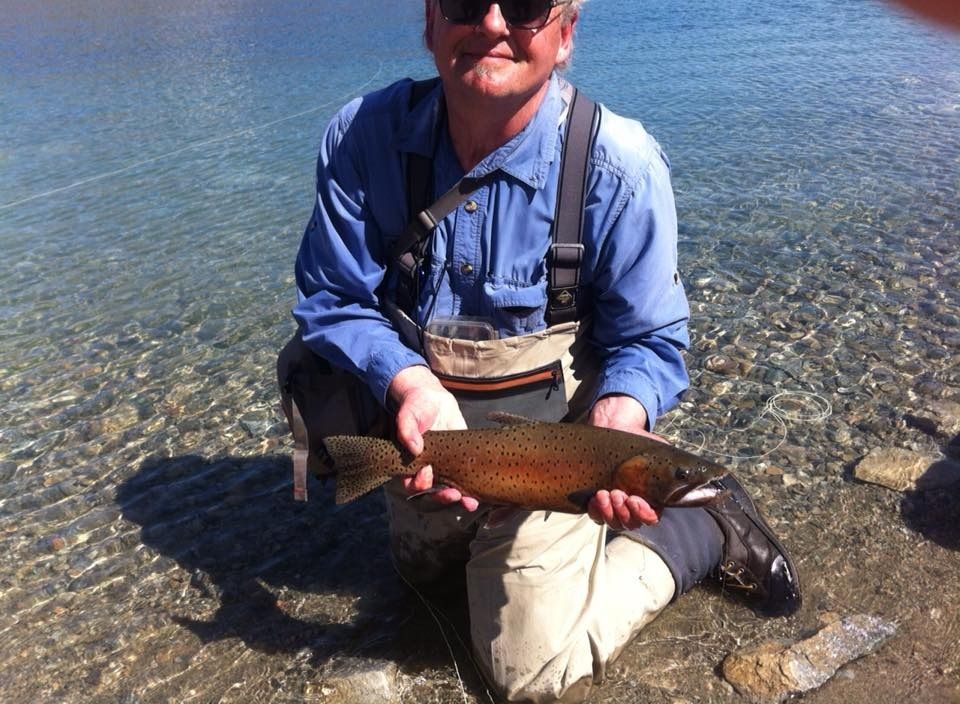
































 The boys at OPST have done it again with their recently released
The boys at OPST have done it again with their recently released 

